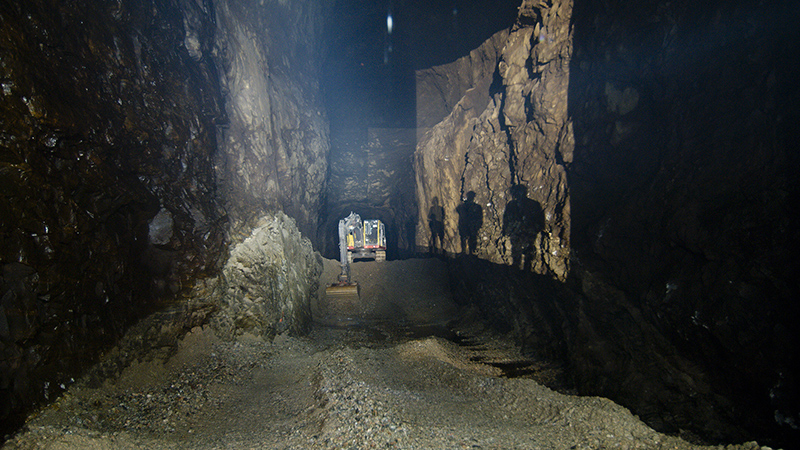1.3 Sediment handling
- Hydropower structures
- Turbine and generators
- Market and services
- Environmental design
- Interdisciplinary projects
- Laboratories
- Associated projects
- HydroCen Laboratories
Sediment handling
Sediment handling
Sediment handling
Clean water is incredibly important in hydropower. Sediments like rock, gravel, sand and clay can damage turbines and tunnels and cause expensive maintenance costs.

In Norway we have hard rock and clean water, but in many other countries sediments in the water can cause huge problems for power plants and the surrounding environment.
Researchers on sediment management are thus addressing a global problem for economy, environment and sustainability. The researchers in this work group shall:
- Find new solutions for sediment management
- Develop turbine designs that manage sediment wear
- Investigate sediment measurements and environmental impacts
Publications work package 1.3 Sediment handling
Publications work package 1.3 Sediment handling
Reynolds Stress Model Study Comparing the Secondary Currents and Turbulent Flow Characteristics in High-speed Narrow Open Channel and Duct Flows. Kadia, S., Albayrak, I., Lia, L., Rüther, N., and Pummer, E. Journal of Hydraulic Engineering, in press, 2024.
Supercritical Flow Characteristics in a Narrow Channel Bend.” Proceedings of the 40th IAHR World Congress. Rivers – Connecting Mountains and Coasts, H. Habersack, M. Tritthart, and L. Waldenberger, eds.. Kadia, S., Larsson, I. A. S., Billstein, M., Lia, L., and Pummer, E. Vienna, Austria, 87–93, 2023.
Review of Structural Mitigation Measures for Glacial Lake Outburst Floods. Hrebrina, Jan; Conevski, Slaven; Pummer, Elena Marianne. The International Association for Hydro-Environment Engineering and Research (IAHR), 2023.
Reynolds stress modeling of supercritical narrow channel flows using OpenFOAM: Secondary currents and turbulent flow characteristics. Kadia, S., Rüther, N., Albayrak, I., and Pummer, E. Physics of Fluids, 34(12), 125116, 2022.
Numerical study of sediment erosion in guide vanes of a high head Francis turbine. Acharya, Nirmal; Trivedi, Chirag; Wahl, Nina Marie; Gautam, S; Chitrakar, Sailesh; Dahlhaug, Ole Gunnar. Journal of Physics, Conference Series. 2019
Numerical modelling of bank failures during reservoir draw-down. Olsen, Nils Reidar Bøe; Haun, Stefan. E3S Web of Conferences. 2018
Three-Dimensional Numerical Study of Free-Flow Sediment Flushing to Increase the Flushing Efficiency: A Case-Study Reservoir in Japan. Esmaeili, Taymaz; Sumi, Tetsuya; Kantoush, Sameh A; Kubota, Y; Haun, Stefan; Ruther, Nils. Water 2017 ;Volum 9.(11) s. 1-22
NTNU
Long-time 3D CFD modelling of sedimentation with dredging in a hydropower reservoir. Olsen, Nils Reidar Bøe; Hillebrand, Gudrun. Journal of Soils and Sediments. 2018
Numerical modelling of downstream-migrating antidunes. Olsen, Nils Reidar Bøe. Earth Surface Processes and Landforms. 2017
Upgrading of a Norwegian pressurized sand trap combined with an open air surge tank. Richter, Wolfgang; Vereide, Kaspar; Zenz, Gerald. Geomechanics and Tunneling 2017 ;Volum 10.(5) s. 620-624
Contact
Contact
About the Project
About the Project
About WP 1.3
Full project title: Sediment handling
Duration: 2022-2024
Objective: The development and application of cost-effective, innovative, technical solutions to handle sediments at hydro power plants exposed to high sediment yield.
R&D Partners: NTNU, SINTEF, Statkraft, University of Bologna, Hydro Lab Nepal, Sira Kvina Kraftselskap, Multiconsult.
Associated projects: SediPASS (KPN), “Sustainable design and operation of hydro power plants exposed to high sediment yield”, FitHydro (H2020), SafePASS, EnergizeNepal, HiFrancis (KPN), DirtX (JPI Climate), HyPOS (H2020).
Researchers working on the project: Elena Pummer, Nils Rüther, Ole Gunnar Dahlhaug, Tor Haakon Bakken, Anders Foldvik, Ana Silva, Julie Charmasson, Bendik Torp Hansen, Lennart Schönfelder, Massimo Guerrero.
PhD working on the project: Nirmal Acharya, Diwash Lai Maskey and Subhojit Kadia.
Master students associated with the project: Javier Zamorra, Dipesh Nepal, Medhin Shiferaw Assaminew, Pratik Bijukchhe, Sudhir Man Shrestha, Ujjwal Shrestha, Wondwosen Dejenne Amsalu.
